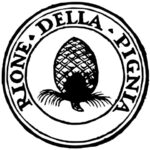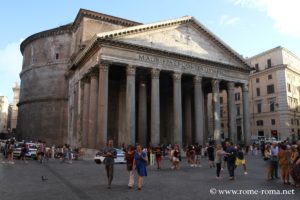 The Rione Pigna (R. IX), a district in the heart of central Rome, takes its name from a colossal bronze sculpture shaped like a pine cone, once a fountain near the Baths of Agrippa, now located in the Cortile della Pigna at the Vatican.
The Rione Pigna (R. IX), a district in the heart of central Rome, takes its name from a colossal bronze sculpture shaped like a pine cone, once a fountain near the Baths of Agrippa, now located in the Cortile della Pigna at the Vatican.
In Roman times, this area included the Temple of Isis and Serapis and residential zones. In the Middle Ages, it became a religious and commercial center, with narrow streets and brick buildings constructed. The Renaissance and Baroque periods left a strong mark, with imposing churches and palaces.
Today, it is a dense neighborhood of winding streets, with lively squares such as Piazza della Rotonda and buildings from the 15th–17th centuries. It is bordered by Piazza Venezia and Via del Corso, preserving the medieval urban fabric with facades from the 15th to 17th centuries.
It houses the Pantheon, an ancient gem; the Palazzo Doria-Pamphilj with its rich art collection; the Baroque church of the Gesù; and others.
Its coat of arms recalls the colossal ancient bronze pine cone.




